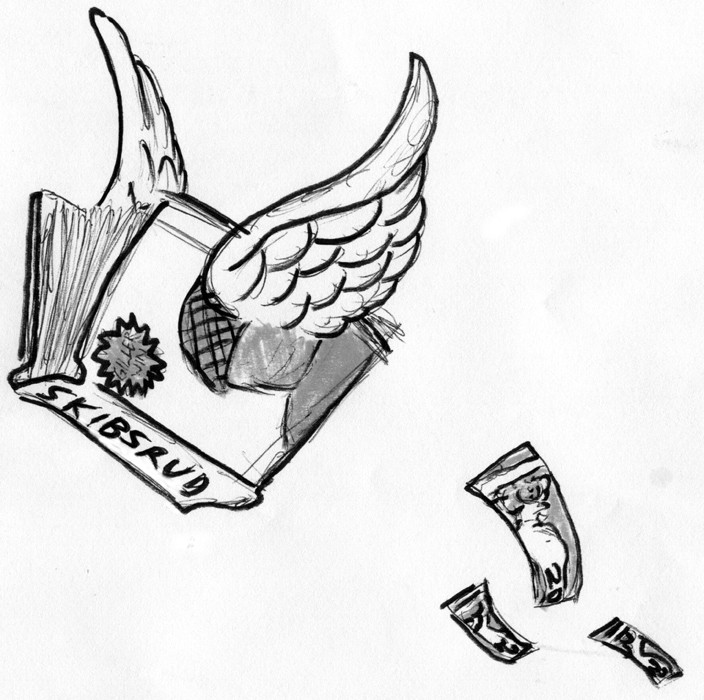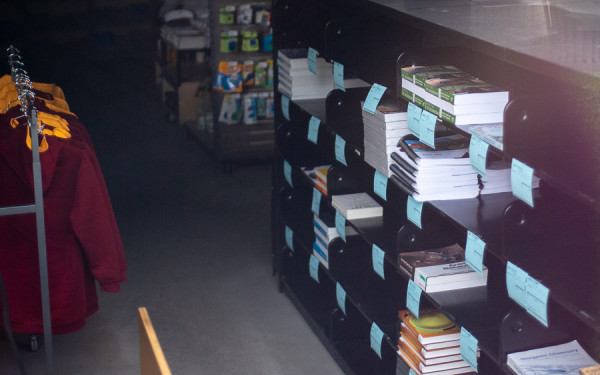The Strange Tale of the Magical Invisible Book
Johanna Skibsrud’s Giller-Winning Debut Novel to Finally Hit Shelves This Week
On Tuesday, Nov. 9, 30-year-old Concordia alumna Johanna Skibsrud won the Scotiabank Giller Prize, Canada’s most prestigious literary award, for her debut novel, The Sentimentalists.
The Giller is a big deal, but this year’s prize was perhaps more newsworthy than its predecessors. It produced a dramatic tale with twists and turns and—perhaps surprisingly for a story about literary fiction—a storybook happy ending.
The Unexpected Win
There are a few things that make it a notable win. Skibsrud is the second creative writing program graduate to snag a Giller in the last three years, a fact that suggests a brave new world of pre-workshopped Canadian creative writing talent.
Whether you think that’s a good thing—whether the workshop experience polishes or homogenizes writers—is up to you. But it’s hard to see a trend towards the prominence of creative writing students reversing as their programs around the country continue to pump out graduates. The Sentimentalists, a story of a young woman’s struggle to come to terms with her father’s experience in the Vietnam War, was in fact born out of Skibsrud’s time at Concordia; an early draft of the novel served as her thesis.
Next is Skibsrud’s age. At 30, she’s the youngest Giller winner ever. It used to be, you had to pay your dues before achieving success, but that may be changing.
In writing terms, Skibsrud’s a baby. Her win signals a win for considering a book on its own terms and not the author’s back catalogue. It’s a sign of a healthy literary establishment that the Giller panel was willing to step outside Canada’s circle of heavily-lauded heavyweights—leaving Douglas Coupland and Jane Urquhart firmly on the longlist—when taking stock of the best books of the year.
Skibsrud herself wasn’t the only symbol of this free-thought, though. One of the storylines to emerge from the revelation of this year’s shortlist—which also included Kathleen Winter’s novel Annabel, Alexander MacLeod’s short story collection Light Lifting, David Bergen’s novel The Matter With Morris and Sarah Selecky’s short story collection This Cake Is for the Party—was that this was the year of the small press.
Four of the five finalists were books published by independent presses. MacLeod’s book was published by Biblioasis, Selecky’s by Thomas Allen Publishers, Winter’s by House of Anansi, and, most significantly, Skibsrud’s was put out by Gaspereau, a press so small that it makes Biblioasis and Thomas Allen seem like Penguin Books by comparison.
The initial print run of The Sentimentalists was 800 copies. A Giller winner can expect to sell in the 75,000 copies range. It’s not hard to see why the difference between those two figures—the one nearly 100 times smaller than the other—might be problematic in some way. At press time, copies of The Sentimentalists are about as easy to come by as Skibsrud’s Giller Prize itself.
The Small Small Press
Gaspereau is a special case. Bibloasis was quick to point out that, though it too is a “small press,” you could buy a physical copy of Light Lifting at your local bookstore this past week without the involvement of a waiting list and/or the prospect of indefinite delay.
Gaspereau is more than a small press, though. It’s an enterprise operating out of Kentville, N.S., which counts six people on its staff, and it specializes in creating books that are well designed, finely crafted, hand-printed works of art.
To own a Gaspereau book is to be part of the magical story of a book coming to life. If you are a print fetishist, if you value the smell of book glue, this is your press.
If you want to read The Sentimentalists, though, you might have to look elsewhere.
The night of the ninth, in the post-win media mania, it came out that Andrew Steeves, head of Gaspereau, had refused offers by larger presses to handle large print runs of The Sentimentalists. Steeves was likely indignant that the biggies were trying to bull their way into his china shop of creative and artistic freedoms—which is a valid concern.
HarperCollins isn’t going to care about the little details the way he does. Doubleday isn’t going to make a hand-printed edition. At this point, the game’s simple. You print as many damn copies of the thing as possible, and you sell them until you can’t sell them anymore. Seventy-five thousand or so copies later, everyone’s rich and happy—including, and perhaps most importantly, Johanna Skibsrud, who plans to pay off her student debt with her Giller Prize winnings ($50,000).
Here’s the thing, though—for the same reason that this article isn’t being published a few weeks from now, Skibsrud’s deserved haul appeared in serious danger in the days following the win.
The general public has a short attention span. Timeliness is everything. Giller winners sell copies because the media hypes them immediately following their win and their publishers flood the nation’s bookstores with copies.
Gaspereau is in no position to do that, however. They estimate they can produce as many as 1,000 new copies a week, but at that rate, it would be a year-and-a-half before they could produce 75,000 copies.
In fact, 52,000 copies from now, there’ll be another Giller winner entirely. What’s an award-winning gal like Skibsrud to do? And for that matter, what of the readers?
The Happy Ending
On the one hand, Steeves’ insistence on controlling his own product is touching. Most businessmen in this position would sell out hard and cash in.
It was nice to see someone with principles retaining those principles in the face of large sums of money for once. But it’s also commendable that Steeves knew when to back down from his principles—sort of.
Monday morning, news got out that Gaspereau had signed a distribution deal with Douglas & McIntyre, an independent Vancouver- based press, for a 30,000 copy print-run that would see shipments of paperback copies hitting store shelves as soon as Friday, Nov. 19—ten days after the win.
It’s a bit of a wait, sure, but it might have been a much longer one if not for this deal.
Though such a decision is somewhat shocking in light of Steeves’ comment that “If you are going to buy a copy of that book in Canada, it’s damn well coming out of my shop,” it’s a compromise that both rescues Skibsrud’s shot at money and an audience, and provides the Canadian public with easy access to a book it’s craving to read.
On top of the Douglas & McIntyre and Gaspereau versions, interested readers can also get The Sentimentalists in e-book form.
A few weeks before the Giller ceremony, Steeves had the oddly prescient good sense to sign a deal with Kobo, an online e-book retailer, which meant for the week between the Giller ceremony and the announcement of the deal with D&M, truly avid book nerds could still satisfy their literary curiosities.
On top of that, D&M’s involvement will see the e-book in Amazon and Apple’s e-bookstores, which should swell e-sales significantly.
Wherever she is right now, Skibsrud’s breathing a sigh of relief.
This article originally appeared in Volume 31, Issue 14, published November 16, 2010.


_600_832_s.png)




